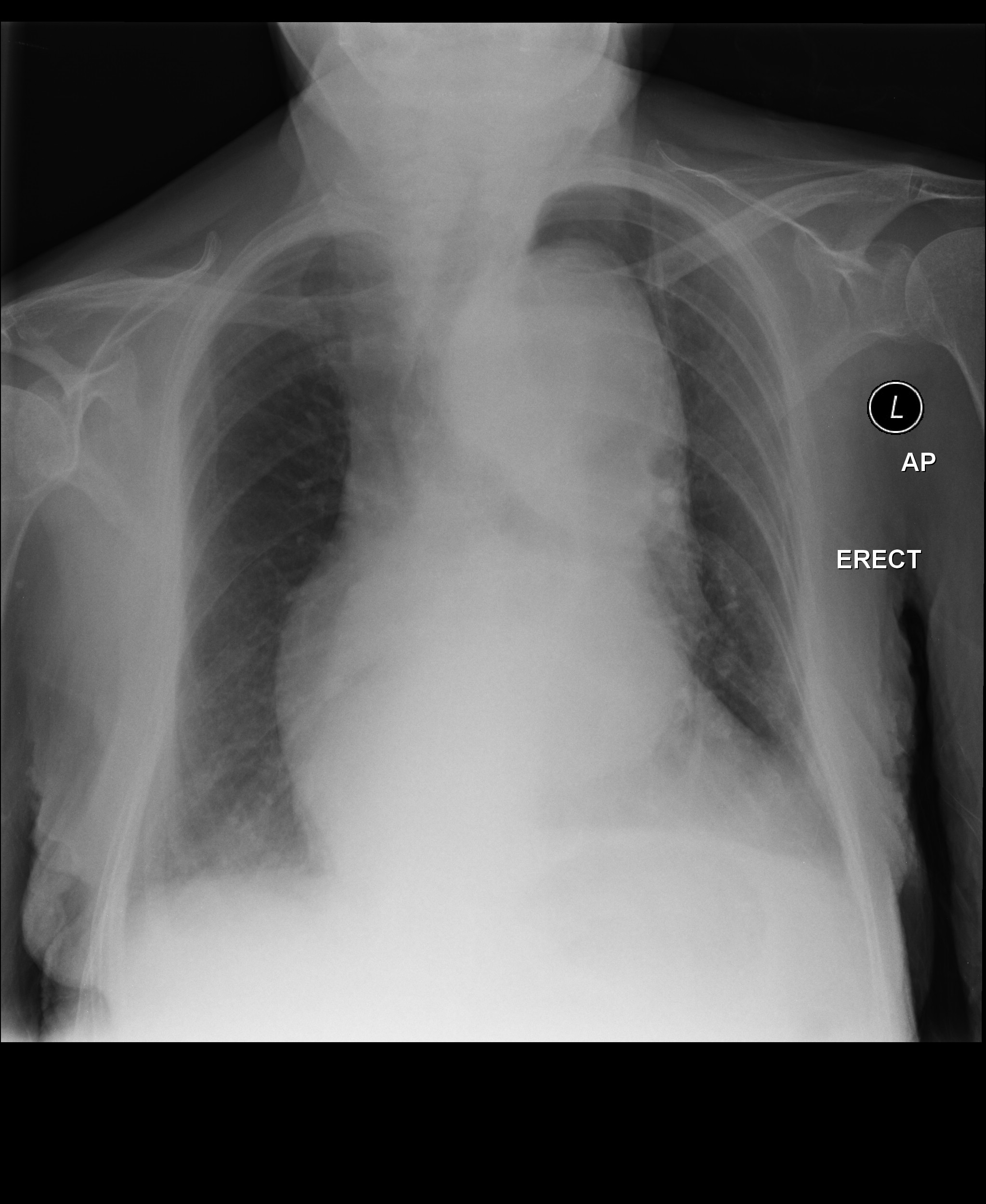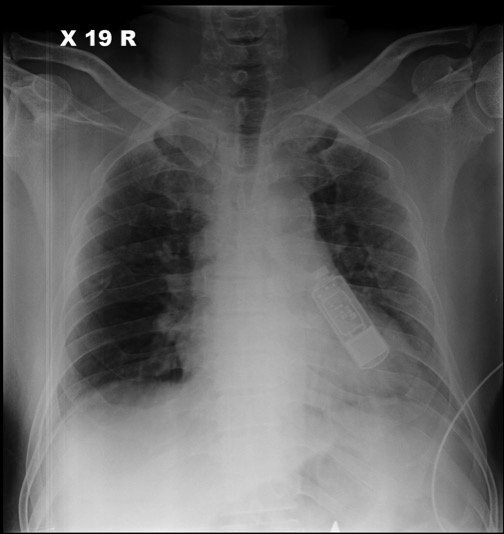Sandbox Jose2
| Resident Survival Guide |
|---|
| Introduction |
| Team |
| Guide |
| Page Template |
| Examine the Patient Template |
| Navigation Bar Template |
| Checklist |
| Topics |
Editor-In-Chief: C. Michael Gibson, M.S., M.D. [1]; Associate Editor(s)-in-Chief: José Eduardo Riceto Loyola Junior, M.D.[2]
Overview
Heartburn is the feeling of burning or pressure inside the chest, normally located behind the breastbone, which can last for several hours and may worsen after food ingestion. Some patients may also have a peculiar acid taste in the back of the throat accompanied with excessive salivation, regurgitating gas and bloating.(https://www.nice.org.uk/guidance/cg184/ifp/chapter/heartburn-and-reflux). The most common cause of heartburn is gastroesophageal reflux disease (GERD), in which the lower esophageal sphincter allows for gastric content to reflux into the esophagus. This may cause atypical symptoms which includes: coughing, wheezing or asthma-like symptoms, hoarseness, sore-throat, dental erosions or gum disease, discomfort in the ears and nose. (https://mainlinegi.com/encounter-health/about-heartburnreflux). Heartburn is a symptom though, and it can have other causes besides GERD, such as esophagitis (infections, eosinophilic) and esophageal cancer. It can also be mistaken by chest pain and presented in life-threatening diseases such as acute coronary syndromes, aortic dissection and pericarditis.
Causes
Life Threatening Causes
Heartburn can be expressed by the patient as a type of chest pain. While evaluating heartburn, it is mandatory to differentiate it from cardiac chest pain. https://pubmed.ncbi.nlm.nih.gov/23419381/
Life-threatening causes include conditions that may result in death or permanent disability within 24 hours if left untreated.
- Acute coronary syndromes
- Aortic dissection
- Pulmonary embolism
Common Causes
- Gastroesophageal reflux
- Eosinophillic esophagitis
- Malignancy
- Achalasia
- Peptic ulcer disease
Diagnosis
Below is shown a compendium of information summarizing the diagnosis of gastroesophageal reflux disease (GERD) according the the American Journal of Gastroenterology guidelines.
The diagnosis of GERD is made based on:
- Symptom presentation;
- Response to antisecretory therapy;
- Objective testing with endoscopy;
- Ambulatory reflux monitoring.
| Classic symptoms of GERD (heartburn and regurgitation) | |||||||||||||||||
| PPI 8-week trial | |||||||||||||||||
| If better: GERD probable | If refractory, proceed to refractory GERD algorithm | ||||||||||||||||
- Screening for H. Pylori is not recommended routinely on GERD.
Shown below is an algorithm summarizing the treatment of refractory GERD according the the American Journal of Gastroenterology guidelines.
| Treat GERD: Start a 8-week course of PPI | |||||||||||||||||||||||||||||||||||||
| Refractory GERD | |||||||||||||||||||||||||||||||||||||
| Optimize PPI therapy | |||||||||||||||||||||||||||||||||||||
| No response: Exclude other etiologies | |||||||||||||||||||||||||||||||||||||
| Typical symptoms: Upper endoscopy | Atypical symptoms: Referral to ENT, pulmonary, allergy | ||||||||||||||||||||||||||||||||||||
| Abnormal: (eosinophilic esophagitis, erosive esophagitis, other) Specific treatment | NORMAL | Abnormal: (ENT, pulmonary, or allergic disorder) Specific treatment | |||||||||||||||||||||||||||||||||||
| REFLUX MONITORING | |||||||||||||||||||||||||||||||||||||
| Low pre test probability of GERD | High pre test probability of GERD | ||||||||||||||||||||||||||||||||||||
| Test off medication with pH or impedance-pH | Test on medication with impedance-pH | ||||||||||||||||||||||||||||||||||||
https://pubmed.ncbi.nlm.nih.gov/23419381/
High Risk: Men >50 years with chronic GERD symptoms (>5 years) and additional risk factors (nocturnal reflux symptoms, hiatal her- nia, elevated body mass index, tobacco use, intra-abdominal distribution of fat) to detect esophageal adenocarcinoma and Barrett’s esophagus.
Surveillance evaluation in men and women with a history of Barrett’s esophagus. In the absence of dysplasia, surveillance examinations should occur at intervals no more frequently than 3 to 5 years. More frequent intervals are indicated in patients with Barrett’s esophagus and dysplasia.
dysphagia, bleeding, anemia, weight loss, recurrent vomiting
https://www.worldgastroenterology.org/UserFiles/file/WDHD-2015-handbook-final.pdf
| Test | Indication | Recommendation |
|---|---|---|
| Proton Pump Inhibitor (PPI) trial | Classic symptoms, no warning/alarm symptoms | If negative does not rule out GERD |
| Barium swallow | Use for evaluating dysphagia | Only useful for complications (stricture, ring) |
| Endoscopy | Use if alarm symptoms, chest pain or high risk* patients | Consider early for elderly, high risk for Barrett’s, non-cardiac chest pain, patients unresponsive to PPI |
| Esophageal biopsy | Exclude non-GERD causes | |
| Esophageal manometry | Pre operative evaluation for surgery | Rule out achalasia/scleroderma-like esophagus pre-op |
| Ambulatory reflux monitoring | Preoperatively for non-erosive disease, refractory GERD symptoms or GERD diagnosis in question | Correlate symptoms with reflux, document abnormal acid exposure or reflux frequency |
Treatment
Shown below is an algorithm summarizing the treatment of refractory GERD according the the American Journal of Gastroenterology guidelines.
Lifestyle modifications are indicated for all patients and include:
- Dietary changes (reduce ingestion of chocolate, caffeine, alcohol, acidic and/or spicy foods - low degree of evidence, but there are reports of improvements with elimination);
- Weight loss for overweight patients or patients that have had recent weight gain;
- Head of bed elevation and avoidance of meals 2–3 h before bedtime if nocturnal symptoms.
| Medication | Indication | Recommendation |
|---|---|---|
| PPI therapy | All patients without contraindications | Use the lowest effective dose, safe during pregnancy |
| H2-receptor antagonist | May be used as a complement to PPIs or as maintenance option in patients without erosive disease | Beware tachyphylaxis after several weeks of usage |
| Prokinetic therapy and/or baclofen | Used if symptoms do not improve | Undergo diagnostic evaluation first |
| Sucralfate | Pregnant women | No role in non-pregnant patients |
Do's
- Differentiate heartburn from cardiac chest pain;
- Consider a twice daily dosing in patients with night-time symptoms, variable schedules, and/or sleep disturbance;
- Advise the patient to cease eating chocolate, caffeine, spicy foods, citrus or carbonated beverages;
- Strongly recommend weight loss if patient's BMI is >25 or recent weight gain;
- Recommend head of bed elevation if nocturnal GERD;
- Advise against late evening meals;
- Promote alcohol and tobacco cessation.
- If there is an alarm symptom such as dysphagia
- If there's no response with such measures and initial 8-week PPI treatment, refer patient to a specialist.
Don'ts
- Do not request an upper endoscopy for every patient complaining of GERD or ;
- Do not request manometry or phmetry routinely
CLAUDICATION
Overview
Claudication is the description of cramping muscle pain that occurs after a certain degree of exercise and is relieved by rest. Claudication is classically caused by peripheral arterial disease, in which an obstruction in artery of the lower limbs can lead to an insufficient blood flow which is not enough to supply the demands from the muscles of that region, but there are other conditions that can mimic its symptoms such as nerve root compression, spinal stenosis, hip arthritis, symptomatic Baker's cyst, venous claudication and chronic compartment syndrome.
Causes
Life Threatening Causes
There are no life-threatening causes, which include conditions which may result in death or permanent disability within 24 hours if left untreated.
Common Causes
- Peripheral arterial disease
- Venous claudication
- Arterial thromboembolism
- Cholesterol embolism
- Vasculitis
- Nerve root compression (radiculopathy, plexopathy)
- Peripheral neuropathy
- Lumbar canal stenosis (pseudoclaudication)
- Spinal stenosis
- Arthritis/Connective tissue disease
- Baker's cyst
- Muscle strain
- Ligament/tendon injury
- Chronic compartment syndrome
Diagnosis
Shown below is a flowchart for diagnostic testing for suspected peripheral arterial disease according to the 2016 AHA/ACC guidelines:
| Suspected PAD | |||||||||||||||||||||||||||||||||||||||||||||||||||||
Symptoms: ❑ Leg pain at rest ❑ Reduced or absent pulses ❑ Leg pain during exertion ❑ Gangrene ❑ Pale extremity ❑ Non healing wound ❑ Calf or foot cramping ❑ Paresthesias | Suspected critical limb ischemia | ||||||||||||||||||||||||||||||||||||||||||||||||||||
| Order Ankle brachial index | |||||||||||||||||||||||||||||||||||||||||||||||||||||
| ≤ 0.90 | Normal 1.00-1.40 Borderline 0.91-0.99 | > 1.40 | |||||||||||||||||||||||||||||||||||||||||||||||||||
| Order Exercise ankle-brachial index if exertion non-joint related leg symptoms If absent - search for alternative diagnosis | Order Toe-Brachial Index | ||||||||||||||||||||||||||||||||||||||||||||||||||||
| Exercise ankle-brachial index | |||||||||||||||||||||||||||||||||||||||||||||||||||||
| Does the patient have > 20% decrease in Postexercise ABI? | Is TBI < 0.7? | ||||||||||||||||||||||||||||||||||||||||||||||||||||
| Yes | No | No | Yes | ||||||||||||||||||||||||||||||||||||||||||||||||||
| PAD confirmed | No PAD - search for alternative diagnosis | PAD confirmed | |||||||||||||||||||||||||||||||||||||||||||||||||||
| Lifestyle-limited claudication despite guideline-directed management and therapy, revascularization considered | |||||||||||||||||||||||||||||||||||||||||||||||||||||
| Yes | No? Continue guideline-directed management and therapy | ||||||||||||||||||||||||||||||||||||||||||||||||||||
| Anatomic assessment: (Class I) ❑ Duplex ultrasound ❑ Computed tomography angiography ❑ Magnetic resonance angiography | Anatomic assessment: (Class IIa) ❑ Invasive angiography | ||||||||||||||||||||||||||||||||||||||||||||||||||||
Shown below is a table summarizing the differential diagnosis of claudication according the age and clinical presentation:
| In younger patients: | |||
|---|---|---|---|
| Diagnosis | Clinical Features | Diagnostic Method of Choice | Treatment |
| Buerger's Disease | Rare vasculitis mostly seen in young Asians males who are smokers. Causes inflammation and thrombosis of the arteries of the legs, feet, forearms, and hands. | Conventional angiography - multilevel occlusions and segmental narrowing of the lower extremity arteries with extensive collateral flow showing a corkscrew or “tree root” appearance | Smoking cessation |
| Extrinsic Compression by Bone Lesions | Not a common cause, 40% of osteochondromas arise from the posterior aspect of distal femur compressing the femoral artery. | MRI, limb x-ray or CT scan | Excision of the lesion and repair of the affected artery |
| Popliteal Artery Entrapment Syndrome | Common in young patients with claudication, especially athletes - compression of the popliteal artery by the medial head of the gastrocnemius muscle. | Stress angiography | Surgery |
| Fibromuscular Dysplasia | Affects young women of childbearing age, affects mostly renal, cerebral and visceral arteries but may affect limbs as well. | Angiography - string-of-beads appearance | Angioplasty |
| Takayasu's Arteritis | Rare vasculitis mostly seen on Asian and South American women. Stenosis of the abdominal aorta and iliac arteries are present in 17% of the patients and may cause claudication. | Conventional angiography | Corticosteroids, methotrexate, azathioprine, and cyclophosphamide |
| Cystic Adventitial Disease | 1 in 1200 cases of claudication, most common in men, 20-50 years without risk factors for atherosclerosis. It is caused by repetitive trauma, which causes the formation of a mucin-containing cystic structure in the wall of the popliteal artery. | Conventional angiography, MRI | Complete excision of the cyst with prosthetic and vein replacement, as well as bypass |
| In older patients: | |||
| Spinal Stenosis | Motor weakness is the most important symptom, which may be accompanied by pain. It starts soon after standing up, and may be relieved by sitting or bending (lumbar spine flexion) | MRI | Analgesic drugs, physical therapy, acupuncture or surgery (gold standard) |
| Peripheral Arterial Disease | May present with absent or reduced peripheral pulses, and audible bruits but some patients may not present with these symptoms. A low ankle-brachial pressure index (<0.9) is suggestive of the disease but if normal it does not exclude it. An exercise ankle-brachial pressure index can be done on patients that doesn't present with these signs.
Other clinical features include: decreased skin temperature, shiny, hairless skin over the lower extremities, pallor on elevation of the extremity, dystrophic toenails, and rubor when the limb is dependent. |
Handheld Doppler, conventional angiography | Smoking cessation, antiplatelet drugs, statins, diabetes and blood pressure control, exercise, percutaneous transluminal angioplasty. |
| Nerve Root Compression | Caused by compression of the nerve root by other structure, such as an herniated disc. The pain usually radiates down the back of the leg and is described as sharp lancinating pain. It may be relieved by adjusting the position of the back (leaning forward). | MRI | Surgery |
| Hip Arthritis | Pain starts when the patient undergoes weight bearing and is worsened by activity. The pain is continuous and intensified by weight bearing, with inflammatory signs such as tenderness, swelling, and hyperthermia. | MRI | Surgery |
| Baker's Cyst | Pain is worsened with activity, not relieved by resting, and may have tenderness and swelling behind the knee. | Ultrasound, MRI | Surgery |
Treatment
Shown below is an algorithm summarizing the diagnosis of claudication due to peripheral arterial disease according the the British Medical Journal guidelines.
| Evaluate affected limb - check for color and trophic changes, early ulcerations, skin temperature, capillary refill time, pulses at the groin and popliteal fossa, and the pedal pulses. | |||||||||||||||||||||||
| If peripheral arterial disease is suspected: Screening test: ankle-brachial index (systolic blood pressure of the dorsalis pedis, posterior tibialis, or fibularis artery is obtained with a handheld Doppler and divided by the higher of the two brachial pressures) - if <0.9 confirms peripheral arterial disease. | |||||||||||||||||||||||
| Secondary prevention for coronary arterial disease: start aspirin 75mg daily and statins | Control cardiovascular risk factors (hyperglycemia, obesity, dyslipidemia, smoking) | Advise the patient to exercise for 30 minutes twice daily to increase pain-free walking and total walking distance by stimulating collateral blood flow) | |||||||||||||||||||||
| Cilostazol may be used for improving symptoms[1] | |||||||||||||||||||||||
| Be aware of the 5 Ps—pain, pale, pulseless, paraesthesia, paralysis—indicating an acute limb ischemia | |||||||||||||||||||||||
Do's
- Assess for peripheral arterial disease, as it is the most common cause for intermittent claudication, but do consider other causes depending on the age;
- Confirm the diagnosis by measuring the ankle-brachial pressure indices;
- Assess the risk factors for atherosclerosis and control them. Encourage patients to cease smoking, to control the blood glucose, prescribe antiplatelet drugs, optimize antihypertensive medication doses, start statins and encourage exercise;
- If there's no improvement, symptoms are disabling or diagnosis is uncertain, refer to a specialist.[2]
- Best treatment options for peripheral arterial disease are: open surgery, endovascular therapy, and exercise therapy. These were superior to medical management in achieve higher walking distance and managing claudication.
- Antiplatelet drugs with either aspirin or clopidogrel alone is recommended to reduce myocardial infarction, stroke, and vascular death in patients with symptomatic PAD.[3]
- In patients with claudication, supervised exercise programs increases functional status and reduce leg symptoms.[3]
- Patients with diabetes mellitus should be oriented to perform self-foot examination and healthy foot behaviors. Quick diagnosis and treatment of foot infections can prevent amputation.[3]
Don'ts
- Symptomatic treatment of the claudication and leg pain must not overshadow the reduction of cardiovascular risk, as these patients have a significantly increased risk of death.
- When treating peripheral arterial disease, always attempt reducing symptoms with less invasive treatment options such as exercising, do not immediately refer patients to more invasive treatment options;
- Don't forget to address other causes of claudication if the patient is presenting it at a younger age, or if the treatment doesn't improve the symptoms.
- Do not perform invasive or non-invasive anatomic assessments for asymptomatic patients.[3]
- In patients not at increased risk of peripheral arterial disease, and without history of physical examination findings suggestive of PAD, the ankle-brachial index is not recommended.[3]
- Anticoagulation should not be used to reduce the risk of cardiovascular ischemic events in patients with PAD.[3]
- Pentoxifylline is not effective for treatment of claudication.[3]
References
COVID
Overview
COVID-19-associated multisystem inflammatory syndrome (also known as PIMS-TS - pediatric inflammatory multisystem syndrome temporally with SARS-CoV2 infection or MIS-C - multisystem inflammatory syndrome in children) is an uncommon clinical entity caused by SARS-CoV2 and seen mostly on children. It presents with: fever > 3 days and elevated markers of inflammation and 2 of the following 5 criteria: rash or conjunctivitis; hypotension or shock; myocardial dysfunction, pericarditis, valvulitis or coronary abnormalities; evidence of coagulopathy and/or acute gastrointestinal problems along with evidence of COVID-19. It seems to be a severe form of COVID-19 in children presenting with symptoms that can be challenging to differentiate from other pediatric infectious diseases such as toxic shock syndrome and Kawasaki disease. The pathophysiology of this form of SARS-CoV2 infection remains unknown.
Historical Perspective
- Reports of a new febrile pediatric entity began to appear in late April 2020 during the COVID-19 pandemic in the Western Europe, characterized by systemic hyperinflammation, abdominal pain with gastrointestinal symptoms and multiorgan involvement affecting especially the myocardium causing cardiogenic shock which reminded the physicians of Kawasaki disease;
- Cases of children with such symptoms were quickly identified in the New York City area, which was then the most heavily affected city in the U.S. by the COVID-19 pandemic;[1]
- A report of 8 cases from Evelina London Children's Hospital was published on 6 May 2020, showing very prominent markers of inflammation such as ferritin, D-dimers, triglycerides, elevated cardiac enzymes, high NT-pro-BNP levels and troponin, being empirically treated with IVIG;[1]
- In 22 May, an article from the Journal of Pediatric Infectious Diseases Society addressed some of the similarities and differences of this new entity with Kawasaki's disease, noting that the demographics affected was significantly different, as it was not seen in Asia despite the pandemic also affecting such countries, but it was affecting mostly children of African ethnicity. The author also differentiated some of the laboratory findings, resembling the macrophage activation syndrome and not Kawasaki's disease.[1]
Classification of Disease Severity of COVID-19-associated multisystem inflammatory syndrome
- There is no established system for the classification of COVID-19-associated multisystem inflammatory syndrome.
Pathophysiology
- The exact pathophysiological mechanism of COVID-19-associated multisystem inflammatory syndrome is unclear.
- Since there is a lag time between COVID-19-associated multisystem inflammatory syndrome appearance and COVID-19 infection (median time: 25 days) it is suspected to be a post-infectious phenomenon related to IgG antibody-mediated enhancement of disease. There are two arguments that support this theory: the presence of IgG antibodies against SARS-CoV2 and the presence of the lag time between COVID-19 symptoms and COVID-19-associated multisystem inflammatory syndrome.
- There is, however, another theory that states that it is still an acute viral presentation of the disease due to the fact that children presenting with such symptoms undergone exploratory laparotomy which found mesenteric adenitis, supporting GI infection. SARS-CoV2 is also known to easily infect enterocytes. Another interesting point to consider is that the worsening of illness has not been seen in patients with COVID-19 who are treated with convalescent plasma, which could have occurred if it was an antibody-mediated enhancement.[2]
- There is another hypothesis for the cytokine storm seen on children with COVID-19-associated multisystem inflammatory syndrome is originated from the known ability of coronaviruses to block type I and type III interferon responses, delaying the cytokine storm in patients that could not control the viral replication on earlier phases of the disease.[2]
Differentiating Any Disease from other disease
- Children who met criteria for COVID-19-associated multisystem inflammatory syndrome presented features that overlapped with the ones seen on Kawasaki's disease and toxic shock syndrome, such as conjunctival injection, oropharyngeal findings (red and/or cracked lips, strawberry tongue), rash, swollen and/or erythematous hands and feet, and cervical lymphadenopathy.
- PCR tests for SARS-CoV-2 were positive in the minority of cases (26%), while the IgG antibody was positive in most patients (87%)[3] and it remains as the preferred laboratory test for differentiating such diseases;
- The first cases of COVID-19-associated multisystem inflammatory syndrome presented with: unrelenting fever (38–40°C), conjunctivitis, cutaneous rash, peripheral edema, extremity pain and remarkable gastrointestinal symptoms. Most didn't have any respiratory symptoms, and all progressed to warm vasoplegic shock, refractory to volume resuscitation demanding vasopressors for hemodynamic support.
- Serum IL-6 level was elevated in most patients. IL-2R, IL-18, and CXCL 9 levels were elevated in all patients of a cohort and mildly increased IFN-γ and IL-8 levels in some.
- TNF-α, IL-1b, IL-2, IL-4, IL-5, and IL-13 levels remained normal in one in a series of cases from New York City.
| Parameters | COVID-19-associated multisystem inflammatory syndrome (PIMS-TS) | Kawasaki Disease (KD) | Kawasaki Disease Shock (KDS) | Toxic Shock Syndrome (TSS) |
|---|---|---|---|---|
| Age (median, IQR) | 9 (5.7-14) | 2.7 (1.4-4.7) | 3.8 (0.2-18) | 7.38 (2.4-15.4) |
| Total white cell count (*10^9/L) | 17 (12-22) | 13.4 (10.5-17.3) | 12.1 (7.9-15.5) | 15.6 (7.5-20) |
| Neutrophil count (*10^9/L) | 13 (10-19) | 7.2 (5.1-9.9) | 5.5 (3.2-10.3) | 16.4 (12-22) |
| Lymphocyte count (*10^9/L) | 0.8 (0.5-1.5) | 2.8 (1.5-4.4) | 1.6 (1-2.5) | 0.63 (0.41, 1.13) |
| Hemoglobin (g/L) | 92 (83-103) | 111.0 (105-119) | 107 (98-115) | 114 (98-130) |
| Platelet number (10^9/L) | 151 (104-210) | 365.0 (288-462) | 235 (138-352) | 155 (92- 255) |
| C-reactive protein (mg/L) | 229 (156-338) | 67.0(40-150) | 193 (83-237) | 201 (122, 317) |
| ALT (IU/L) | 42 (26-95) | 42.0 (24-112) | 73 (34-107) | 30.00 (22.10, 49.25) |
| Albumin (g/L) | 24 (21-27) | 38.0 (35-41) | 30 (27-35) | 27.00 (21.00, 31.00) |
| Ferritin (ug/L) | 610 (359-1280) | 200 (143-243) | 301 (228-337) | - |
| NT-Pro-BNP (pg/ml) | 788 (174-10548) | 41 (12-102) | 396 (57-1520) | - |
| Troponin (ng/L) | 45 (8-294) | 10.0 (10-20) | 10 (10-30) | - |
| D-dimer (ng/ml) | 3578 (2085- 8235) | 1650 (970-2660) | 2580 (1460- 2990) | - |
- Most patients presented with the following findings: elevated erythrocyte sedimentation rate or C-reactive protein level, elevated ferritin level, lymphocytopenia, hypoalbuminemia, neutrophilia, elevated alanine aminotransferase level, anemia, thrombocytopenia prolonged INR, elevated d-dimer level, or elevated fibrinogen level.[4]
Epidemiology and Demographics
- Poor prognostic factors include age over 5 years and ferritin larger than 1400 µg/L.
Age
- Children aged age over 5 years seem to have a worse prognosis than younger ones.[5]
- The median age found out in a study published by JAMA was 9 years.[3]
Gender
Race
Comorbidities
- Clinical evidence of association with underlying diseases is still scarce since it is a rare presentation of COVID-19 in children and teenagers.
References
Overview
Multisystem Inflammatory Syndrome in Children (MIS-C) is a condition that causes inflammation of some parts of the body like heart, blood vessels, kidneys, digestive system, brain, skin, or eyes. According to recent evidence, it is suggested that children with MIS-C had antibodies against COVID-19 suggesting children had COVID-19 infection in the past. This syndrome appears to be similar in presentation to Kawasaki disease, hence also called Kawasaki -like a disease. It also shares features with staphylococcal and streptococcal toxic shock syndromes, bacterial sepsis, and macrophage activation syndromes.
Classification of Disease Severity of MIS-C
- Mild Disease
- Children with MIS-C fall under this category who-
- require minimal to no respiratory support.
- minimal to no organ injury
- normotensive
- Do not meet the criteria for ICU admission.
- Severe Disease
- Children with MIS-C fall under this category who-[1]
- have significant oxygen requirements (HFNC, BiPAP, mechanical ventilation).
- have a mild-severe organ injury and ventricular dysfunction.
- have a vasoactive requirement.
- meet the criteria for ICU admissions
Pathophysiology
- The excat pathophysiological mechanism of MIS-C is unclear. Since there is a lag time between MIS-C appearance and COVID-19 infection it is suspected to be causing by antibody dependent enhancement.
- Another hypothesis is that since coronavirus block type1 and type III interferons, it results in delayed cytokine response in children with initially high viral load or whose immune response is unable to control infections causing MIS-C. Therefore, IFN responses result in viral clearance when the viral load is low resulting in mild infection. However, when the viral load is high and /or immune system is not able to clear the virus, the cytokine storm result in multisystem inflammatory syndrome in children (MIS-C).[2]
- It is also suspected that since MIS-C presents predominantly with gastrointestinal manifestations, it replicates predominantly in the gastrointestinal tract.[2]
Differentiating Any Disease from other disease
It should be differentiated from following diseases
- Bacterial sepsis
- Staphylococcal and streptococcal toxic shock syndrome
- Kawasaki disease.
- More information about the differential diagnosis could be found here.
Epidemiology and Demographics
- According to a recent study among the 186 children with MIS-C, the rate of hospitalization was 12% between March 16 and April 15 and 88% between April 16 and May 20.
- 80% of the children were admitted to the intensive care unit and 20% of the children required mechanical ventilation.
- 4% of the children required extracorporeal membrane oxygenation.[3]
- The mortality rate among 186 children with MIS-C was 2%.[3]
Age
- Among the 186 children with MIS-C distribution of age group was[3]
- <1yr-7%
- 1-4yr-28%
- 5-9yr-25%
- 10-14yr-24%
- 15-20yr-16%.
Gender
- Among the 186 children with MIS-C
Comorbidities
- Children with MIS-C had following underlying comorbidities.[3]
- Clinically diagnosed Obesity-8%
- BMI-Based Obesity-29%
- Cardiovascular diasease-3%
- Respiratory disease-18%
- Autoimmune disease or immunocompromising condition-5%
Organ System Involved
- 71% of children had involvement of at least four organ systems.[3]
The most common organ system involved in MIS-C children among a total of 186 children were.[3]
- Gastrointestinal(92%)
- Cardiovascular(80%)
- Hematologic(76%)
- Mucocutaneous(74%)
- Pulmonary(70%)
- Historical perspective
External links
| Classification | [[d:Lua error in Module:WikidataIB/sandbox at line 2057: attempt to index field 'wikibase' (a nil value). |D]] |
|---|---|
| External resources |
| Wikimedia Commons has media related to [[commons:Lua error in Module:WikidataIB at line 428: attempt to index field 'wikibase' (a nil value).|Lua error in Module:WikidataIB at line 428: attempt to index field 'wikibase' (a nil value).]]. |
Lua error in Module:Authority_control at line 788: attempt to index field 'wikibase' (a nil value).

| Syncope classification | |||||||||||||||||||||||||||||
| Vasovagal | |||||||||||||||||||||||||||||
| Micturation | cough | ||||||||||||||||||||||||||||
| xxxx | KKKKKKK | yyyyy | |||||||||||||||||||||||||||

| Disease | Type | Sign | Symptom | ||
|---|---|---|---|---|---|
Syncope is classified into three categories:
| Disease Name | Age of Onset | Gender Preponderance | Signs/Symptoms | Imaging Feature(s) | Macroscopic Feature(s) | Microscopic Feature(s) | Laboratory Findings(s) | Other Feature(s) | ECG view |
|---|---|---|---|---|---|---|---|---|---|
- Pages with reference errors
- Pages with script errors
- Projects
- Help
- Resident survival guide
- Templates
- Commons category link from Wikidata
- Commons category link is on Wikidata using P373
- Use dmy dates from January 2011
- Articles with invalid date parameter in template
- Autosomal dominant disorders
- Genodermatoses
- Rare diseases
- Biology of attention deficit hyperactivity disorder
- Autism
- Intellectual disability
- Biology of obsessive–compulsive disorder
- Disorders causing seizures


